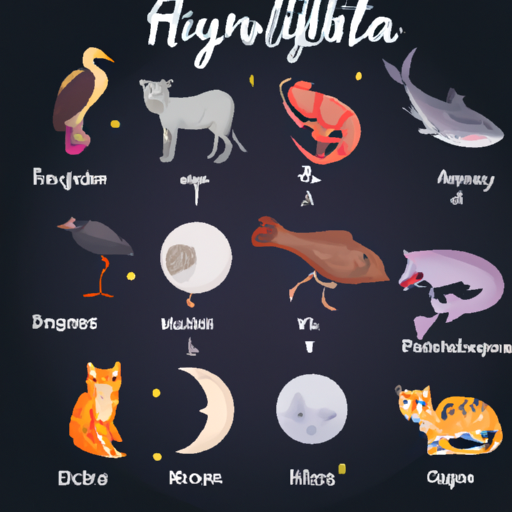 Introduction:
Introduction:
Animals have evolved to adapt to their specific environments, and one adaptation that has emerged is the ability to be active during the night. These animals, known as nocturnal creatures, have developed various physiological and behavioral traits that allow them to thrive in the darkness. In this detailed article, we will explore a wide range of species from different taxonomic groups that exhibit nocturnal behavior and examine the reasons behind their adaptations.
Mammals:
1. Bats: Perhaps the most well-known nocturnal mammals, bats have exceptional night vision and echolocation abilities, allowing them to navigate and locate prey in the dark.
2. Owls: These birds of prey possess extremely acute hearing and vision, enabling them to hunt efficiently during the night. Their feathers also aid in silent flight, allowing them to approach prey undetected.
3. Lemurs: Native to Madagascar, lemurs are primates that have adapted to the nocturnal lifestyle due to competition with diurnal primates. They have specialized eyes that are more sensitive to low-light conditions.
4. Kangaroo rats: These rodents are highly adaptive to arid environments and have become nocturnal to avoid the intense heat during the day. They exhibit excellent hearing and can detect predators from afar.
Reptiles and Amphibians:
1. Geckos: Many gecko species are nocturnal, possessing large eyes with vertical pupils that maximize light intake. They have adhesive toe pads that aid in climbing and hunting during the night.
2. Frogs: Numerous frog species are nocturnal to avoid predators and reduce competition for resources. They have developed excellent camouflage and vocalization techniques to communicate in the dark.
3. Snakes: Several snake species are primarily active at night, as it offers cooler temperatures for hunting and reduces the risk of encountering diurnal predators.
Insects:
1. Fireflies: These bioluminescent insects are most active during the night, using their light-producing organs to attract mates. They have a unique ability to synchronize their flashes, creating mesmerizing displays.
2. Luna moths: These large moths are nocturnal and use their pale green wings to blend in with foliage during the day. They are primarily active during the night to avoid predation and locate mates.
3. Katydids and crickets: These insects produce distinctive sounds, known as calling songs, during the night to attract mates. Their ability to produce and detect sound is highly developed, allowing for efficient communication.
Birds:
1. Nightjars: These birds have cryptic plumage that camouflages them during the day. They are excellent aerial hunters, feeding on insects attracted to artificial lights during the night.
2. Nighthawks: Similar to nightjars, nighthawks have evolved to be active during the twilight hours, taking advantage of the abundance of insects during this time.
3. Kiwis: Native to New Zealand, these flightless birds are nocturnal and have developed a highly developed sense of smell to navigate and locate food in the dark.
Marine Life:
1. Lanternfish: These small fish inhabit the deep sea and are bioluminescent. They exhibit diel vertical migration, where they ascend to the upper layers of the ocean during the night to feed on plankton.
2. Vampire squid: Despite its name, the vampire squid does not suck blood. It lives at depths of over 2,000 feet and has large eyes that help it detect bioluminescent prey in the dark.
Conclusion:
Nocturnal behavior has evolved in a diverse array of animals across various taxa. From mammals and reptiles to insects and birds, these creatures have developed specialized adaptations to thrive in the darkness. Whether it be acute night vision, echolocation, bioluminescence, or vocalization, each species has found its unique way to navigate, hunt, and communicate during the night. Exploring the world of nocturnal animals provides fascinating insights into the rich diversity and complexity of nature’s adaptations.
